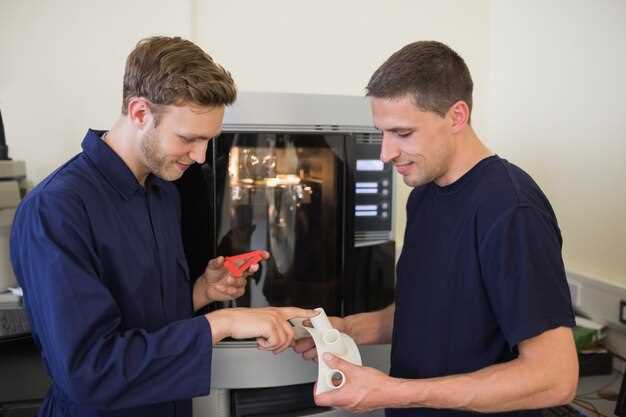
The electrical system of a motorcycle or any vehicle is crucial for its performance, and at the heart of this system are the stator and regulator rectifier. These components work together to generate and manage the charging of the battery, ensuring that the electrical energy required for ignition and operation of various systems is always available. Properly functioning stator and regulator rectifier units are essential for a reliable riding experience.
To ensure that these components are performing optimally, regular testing is necessary. This guide will provide a step-by-step approach to test the stator and regulator rectifier, helping you diagnose any issues that might affect your vehicle’s electrical system. Understanding how to conduct these tests will empower you to maintain your vehicle in peak operating condition, preventing potential electrical failures in the future.
By following this comprehensive testing guide, you’ll not only gain insight into the functionality of the stator and regulator rectifier, but also develop a foundational knowledge of how the entire charging system operates. Let’s delve into the essential procedures to effectively test these components and ensure your vehicle remains charge-ready for every journey.
Understanding Stator Function and Resistance Testing

The stator plays a crucial role in the charging system of motorcycles and various vehicles, serving as the stationary part of the alternator. It generates alternating current (AC) through electromagnetic induction as the rotor spins within its coils. This process is vital for converting mechanical energy into electrical energy, supplying power to the regulator rectifier and ultimately charging the vehicle’s battery.
Resistance testing of the stator is essential to ensure its proper function. A malfunctioning stator can lead to insufficient charging, affecting the overall performance of the electrical system. To conduct a resistance test, a multimeter is commonly used. The process involves measuring the resistance across the stator’s three winding pairs. Each pair should exhibit a similar resistance value, which typically falls within the manufacturer’s specified range.
In addition to assessing winding resistance, it’s important to check for short circuits between the stator windings and the stator core. This is done by switching the multimeter to the lowest ohm setting and probing each winding to the stator’s frame. A reading indicating continuity suggests a failure, which requires replacement to restore the system to proper functionality.
Regular resistance testing of the stator can help identify potential issues before they lead to significant problems, ensuring that the charging system remains efficient and reliable. This proactive approach not only enhances vehicle performance but also extends the lifespan of the electrical components reliant on the stator’s functionality.
Diagnosing Regulator Rectifier Output Performance

The regulator rectifier is a crucial component in the charging system of motorcycles and other vehicles, as it converts alternating current (AC) from the stator into direct current (DC) to recharge the battery. To ensure that the regulator rectifier operates effectively, it’s important to perform a series of tests that evaluate its output performance.
Start by checking the charging system voltage. With the engine running at a specified RPM, use a multimeter to measure the voltage at the battery terminals. A functional regulator rectifier should typically output between 13.5 and 14.5 volts. If the voltage falls outside this range, it may indicate a malfunctioning regulator rectifier or other issues in the charging system.
Next, perform a load test. Apply a load to the battery, such as turning on the headlights and accessories, while monitoring the output voltage. During this process, the voltage should remain stable. A significant drop in voltage under load suggests that the regulator rectifier is unable to maintain proper output performance, potentially due to internal failure or thermal issues.
Additionally, inspect the AC output from the stator. With the engine running, measure the voltage across the stator wires. The output should increase with engine RPM. If there is little to no output, this may indicate a problem with the stator itself, which can affect the overall charging system.
Lastly, examine for any signs of overheating or physical damage on the regulator rectifier. Excessive heat can lead to failure, and burnt or discolored components may be a clear sign that the unit needs replacement. By systematically testing the charging system, diagnosing the regulator rectifier’s output performance becomes a straightforward process, ensuring that your vehicle remains reliably charged and operational.
Performing the Complete Charging System Analysis
To ensure the optimal performance of your vehicle’s electrical system, conducting a thorough charging system analysis is essential. A complete analysis involves several key tests aimed at assessing the integrity and functionality of the stator, regulator, and rectifier components.
Step 1: Visual Inspection
Begin with a detailed visual inspection of the charging system. Look for signs of wear, damage, or corrosion on wiring, connectors, and the charging components themselves. Ensure that all connections are secure and free from debris.
Step 2: Battery Voltage Test
Start the analysis with a battery voltage test. Use a multimeter to measure the battery voltage with the engine off. A healthy battery should read approximately 12.6 volts. If it’s lower, the battery may need charging or replacement.
Step 3: Alternator Output Test
With the engine running, test the alternator output. The voltage should increase to between 13.5 and 14.5 volts. If the output is below this range, the stator or regulator may be malfunctioning. Document the readings for further analysis.
Step 4: Load Test
Perform a load test on the charging system to simulate real-world conditions. Use a load tester to apply a known load to the battery while monitoring the voltage output. The voltage should remain stable; significant drops may indicate weak components.
Step 5: Rectifier Functionality Test
To verify the rectifier’s effectiveness, test for proper AC to DC conversion. Measure the AC voltage coming from the stator, and then measure the DC output at the battery. The rectifier should maintain a consistent DC output if functioning correctly.
Step 6: Grounding and Resistance Check
Ensure proper grounding throughout the charging system. Use a multimeter to check for resistance in the grounding connections. High resistance can lead to poor system performance and should be addressed immediately.
By following these steps, you can perform a complete charging system analysis, ensuring that your vehicle’s electrical components are functioning effectively, which in turn enhances performance and reliability.





